Last updated on March 7th, 2025
Plumbing in a washing machine is straightforward if you are fitting it in the same place as the old one. If you are good at DIY, you should be able to plumb in a washing machine without the need to call a plumber.
I have been plumbing full-time for over a decade and have installed many washing machines and dishwashers over the years. Here I’ll show you how to plumb in a washing machine based on my on-the-job experience.
How to plumb in a washing machine
There are three things needed to plumb in a washing machine, they are:
- A water supply: You need to make sure there is a cold water supply close to where you want the washing machine installed. This water supply will need a washing machine valve to connect the hose to from the washer.
- Wastewater pipe: A waste pipe is needed to drain the dirty wastewater. This pipe (typically under the kitchen sink) will need a connector for the drain hose, or the hose can go into a standpipe trap.
- An electric supply: An electric supply (a plug socket) is needed to power the washing machine.
If you are installing a washing machine in a place where there hasn’t been one before, you will need to make sure you have these three supplies and connections installed first.
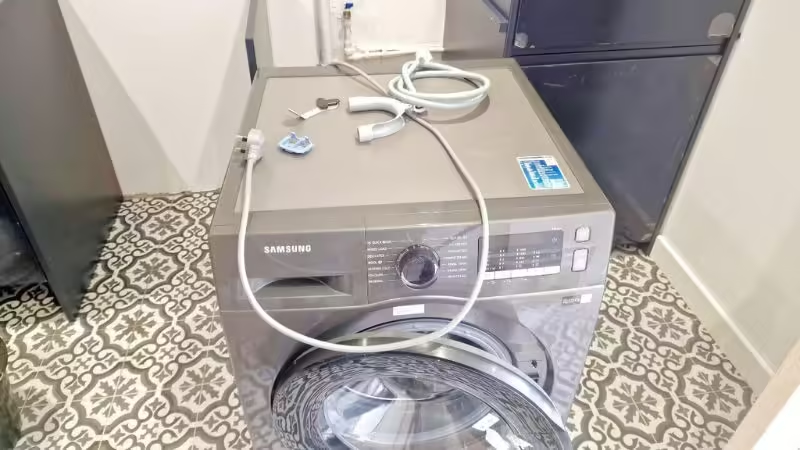
Replacing a washing machine in place of an old one means you will already have all the connections needed. You will need to disconnect the old one first.
How to disconnect a washing machine
Disconnecting a washing machine is needed before you can plumb in a new one when replacing it.
Here’s how:
- Unplug the washing machine’s electric cable from the plug socket
- Turn off the water supply to the washing machine
- Disconnect the water supply pipe by turning the plastic nut anti-clockwise
- Disconnect the drain hose by pulling it out of the standpipe, or pulling it off the waste pipe connector under the sink – You might need to use a screwdriver to remove the hose clamp if there is one there

Plumbing in a washing machine
To plumb in a washing machine you need three things, a drain hose and cable which are fixed to the washer, and a water inlet hose which you will usually get with a new machine.
1. Remove the transit bolts
If it’s a brand-new washing machine, the first thing you need to do is remove the transit bolts from the back with a socket and ratchet, or an adjustable spanner. Then fit the supplied plastic covers in the holes where the bolts were.
Transit bolts keep the drum still when moving the machine and there are usually 4 or 5 bolts to remove.
2. Connect to the cold water supply
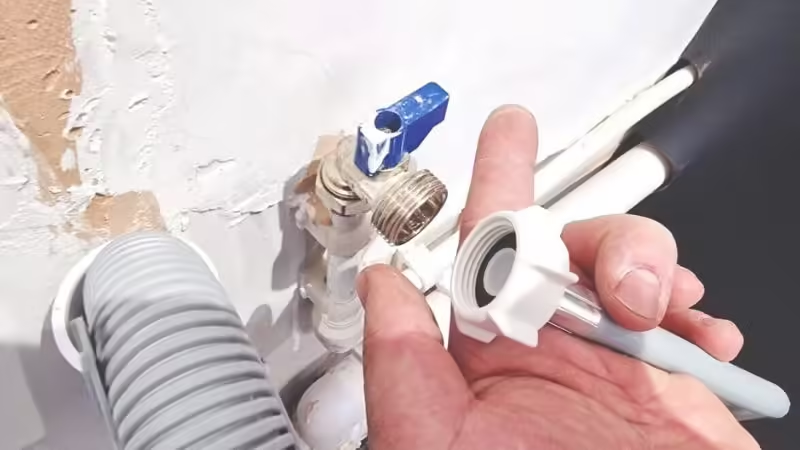
Most washing machines only need a cold water supply, but some need a hot also. You should get a new inlet hose supplied with a new washer (typically blue or grey), but you can use the old hose if it’s easier.
Connect the inlet hose to the connection on the washing machine by turning the plastic nut clockwise, and the other end to the washing machine valve with the blue handle. Then turn the water back on by turning the handle on the valve.
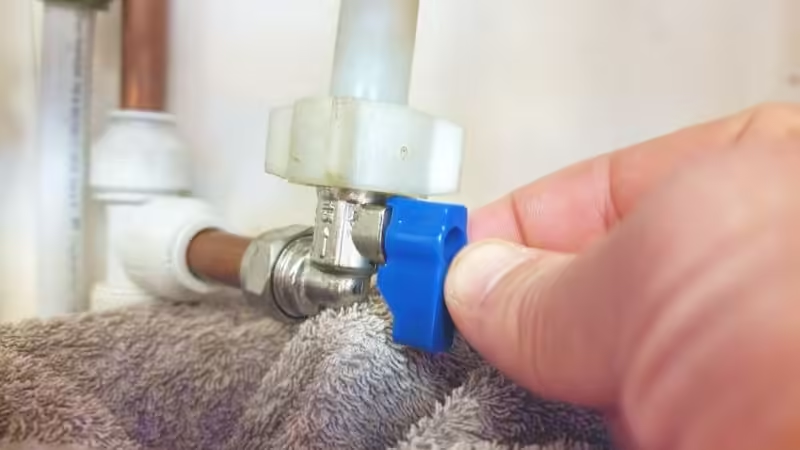
3. Connect the drain hose
The grey flexible drain hose should be connected to a drain hose connector under the kitchen sink. Make sure to use a hose clamp if it’s loose.

You can also push the drain hose into a washing machine standpipe trap if you have one, the horseshoe clip should be connected to the hose before pushing it in.
Drain hoses are fixed to the washing machine, but you can buy an extension kit if yours isn’t long enough.

4. Plug in the cable
Washing machines are always fitted with a standard plug on the end of a cable. This plug needs to be plugged into a wall socket and the socket needs to be switched on.
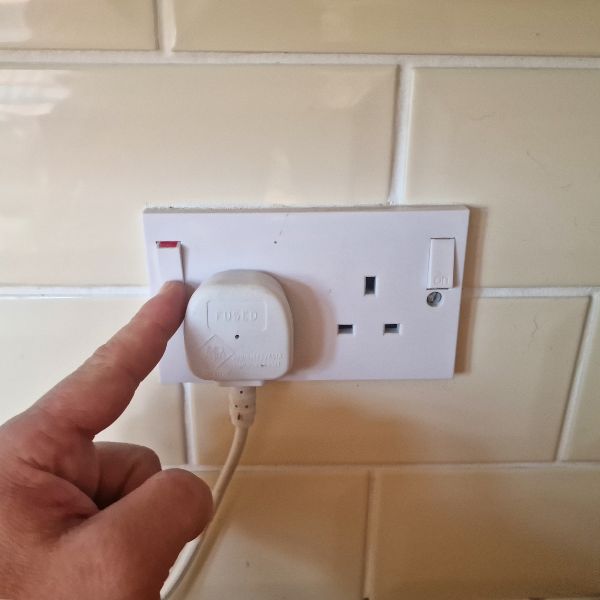
Once the three connections are made, you should give it a test run (empty) on a quick cycle or rinse to make sure all is good before adding any laundry on a full cycle.
Summary
Plumbing in a washing machine can be difficult when doing it for the first time. A washing machine must be connected to the water supply, the waste pipe, and an electric supply.
If you already have all these connections near to the new washing machine location, plumbing it in should be simple. If you have to run new supplies in then calling a plumber might be the best option.
Feel free to ask any questions in the comments below, and I’ll do my best to help. If you found this post helpful, please consider sharing it.
FAQs
Can I plumb in a washing machine myself?
Yes! If you are competent and confident, plumbing in a washing machine yourself can be simple. There are two pipes and an electric cable that need to be connected.
Do you have to turn off the water to install a washing machine?
Yes! You have to turn off the water to install a washing machine. You can turn off the water supply at the washing machine valve or turn off the mains water supply at the stopcock.
Do washing machines come with a waste pipe?
Yes. Brand-new washing machines come with a drain hose already connected to the washing machine. These are usually grey plastic hoses that need to be connected to a trap connection under the sink or into a washing machine standpipe trap.
How long does it take to install a washing machine?
It depends. I would say for a plumber to install a washing machine can take anywhere between 10 minutes to an hour or more depending on what needs to be done.
What connections are needed for a washing machine?
The three connections needed for a washing machine are the water supply inlet pipe, the wastewater drain hose, and the electric supply plug.
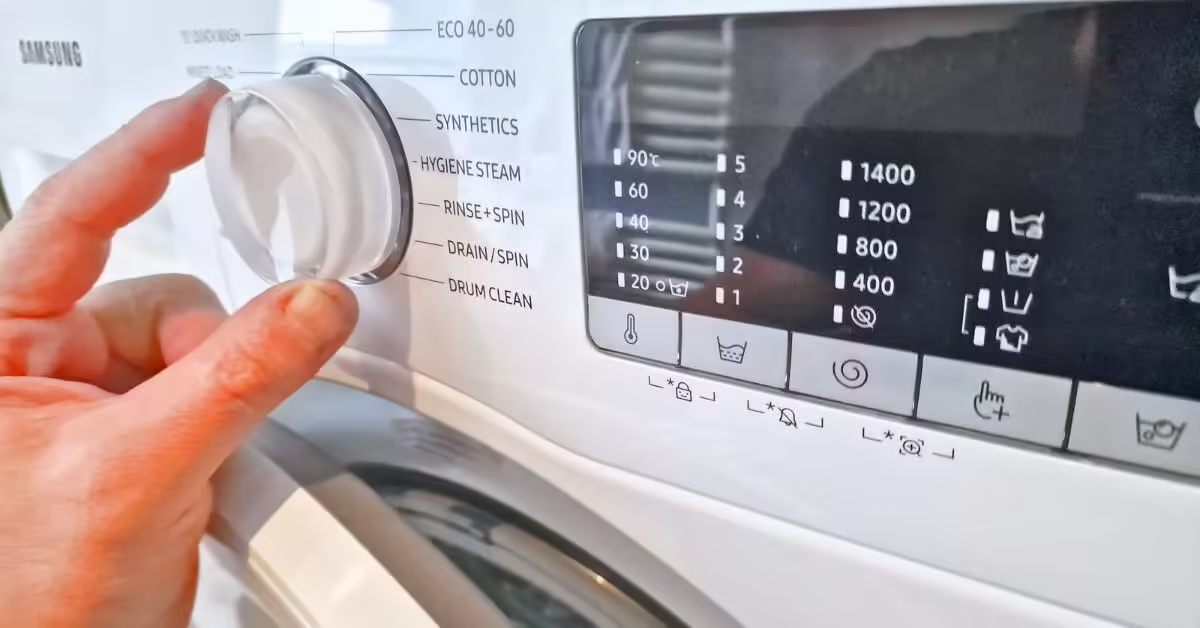

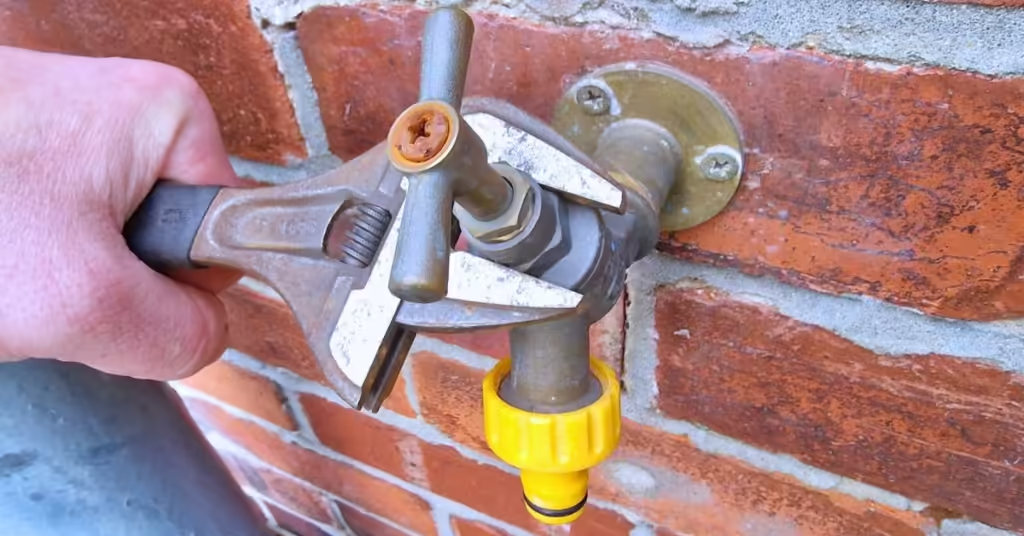
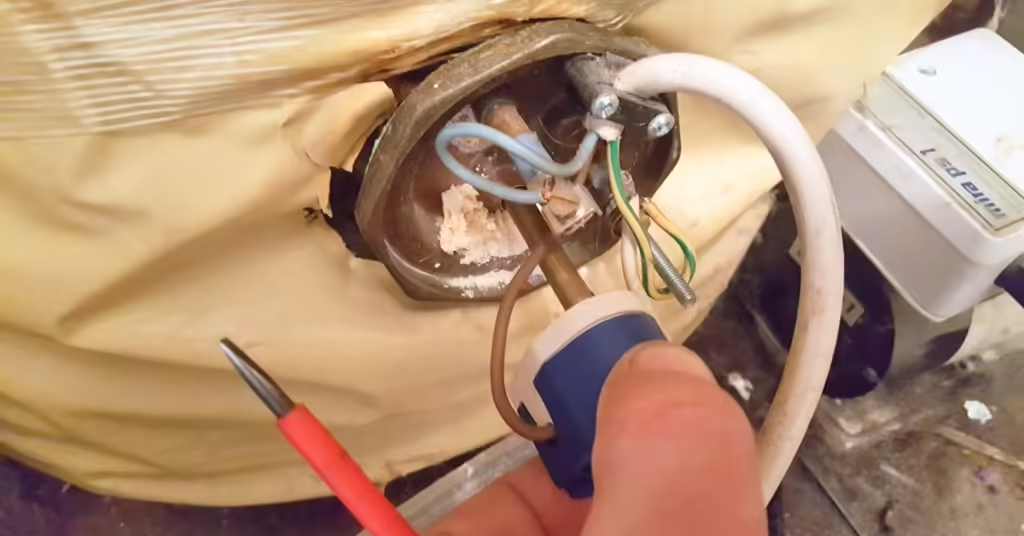
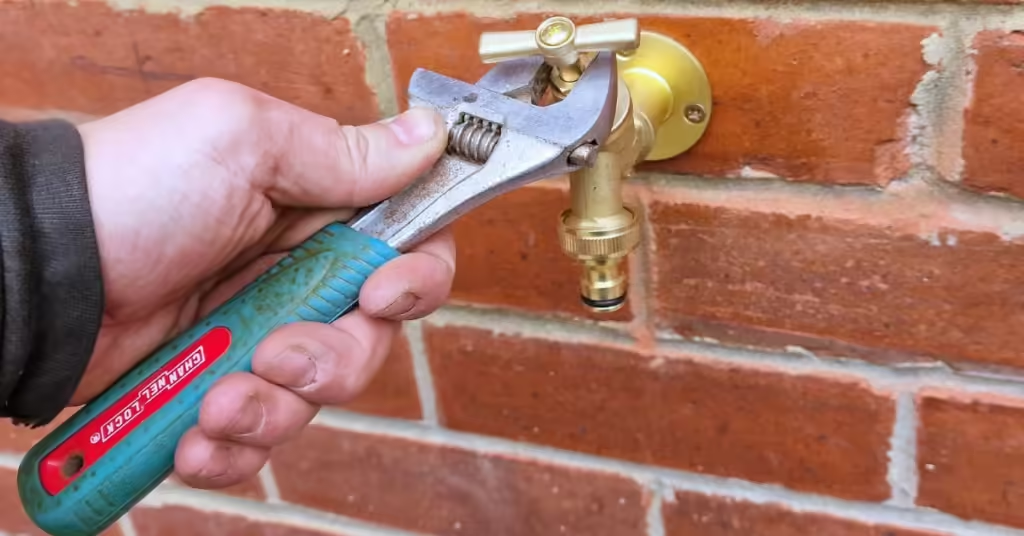
one of the best explanations, brief instructions and a photo. Thank you.
Question. New home. New washing machine delivered, decided to connect myself. In shed so easy to see on wall which has elec point, water connection, waste with jubilee clip ready ….and a third, thin grey ribbed pipe below waste “receiver’ which branches off same white waste pipe
what is this for
Gratefully for advice
You’re welcome Mandy. Not sure about the other pipe, I would need to see a photo.